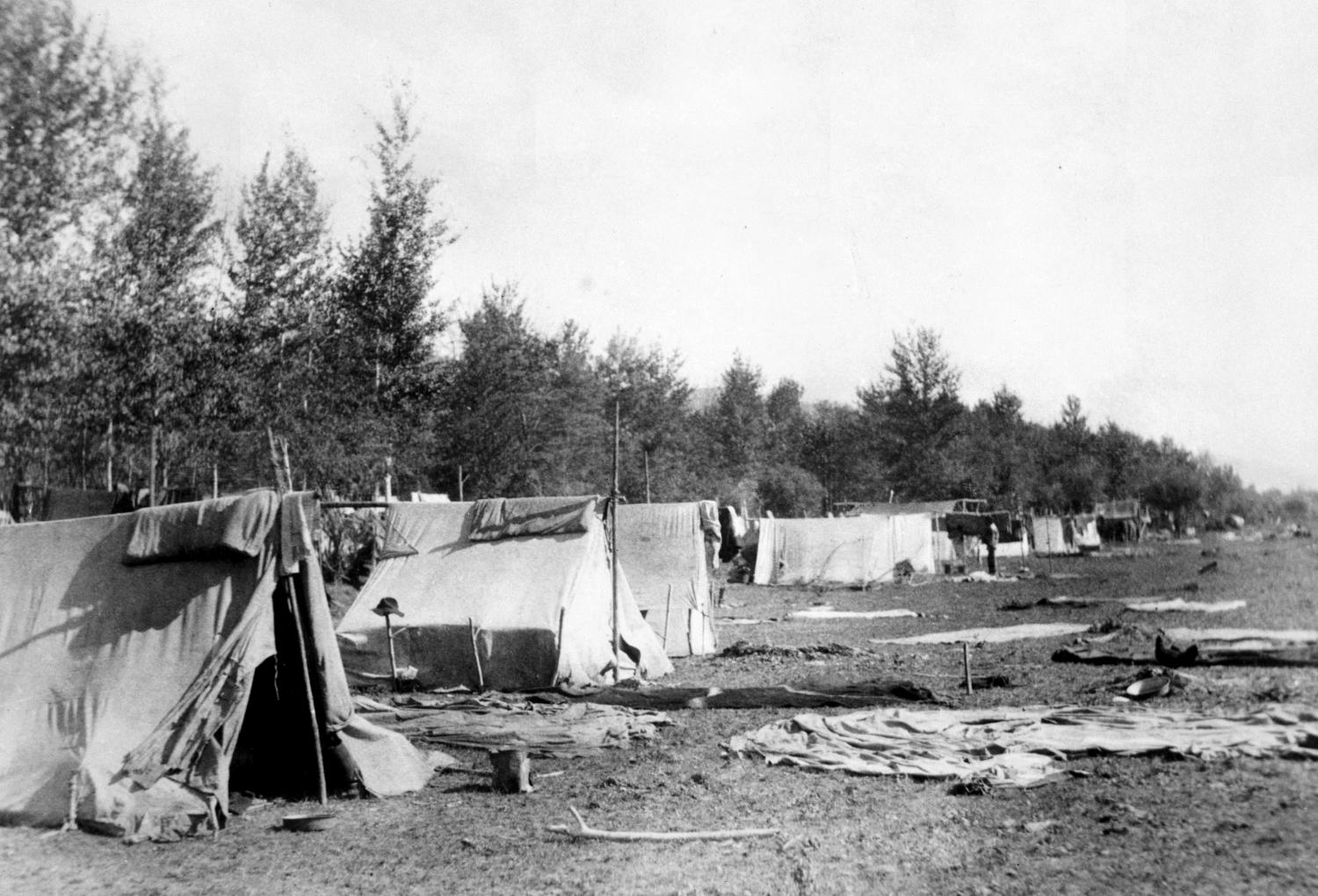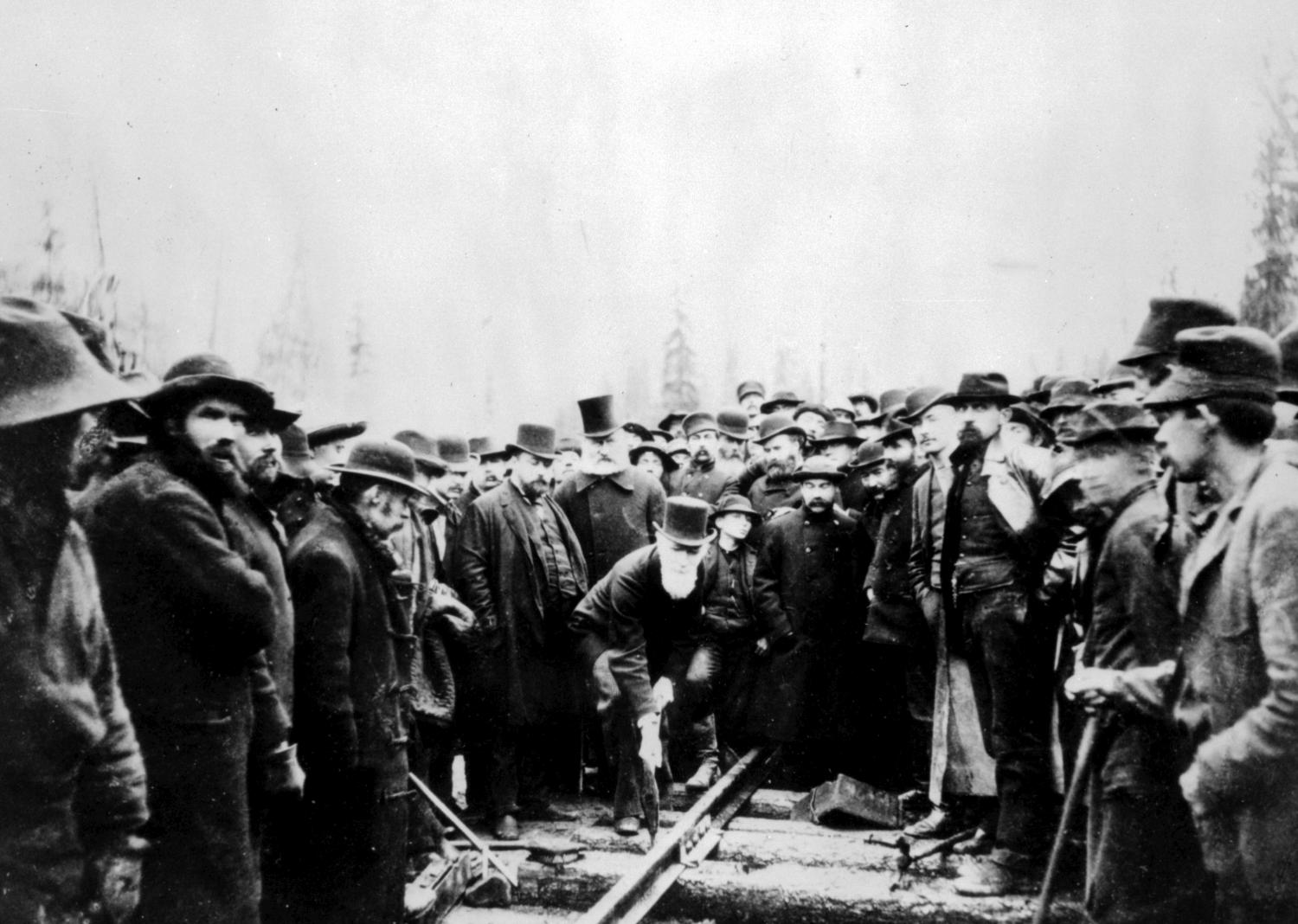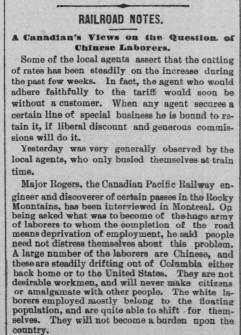Chinese Railway Workers
17,000 Chinese immigrants work on Canada's transcontinental railway
Date: 1881
In 1881, British Columbia was finally getting its railway connecting it to the rest of the Dominion. The project had been on the drawing boards for a decade, bogged down by scandal and political infighting. Now, developers faced another issue: they didn’t have enough labour to build it. At the time, B.C.’s total population was around 35,000, and most men were employed in resource extraction such as fishing, mining and forestry. The hazards of railway work held little appeal.
This was a challenge railway contractor Andrew Onderdonk had encountered before. Previously, he’d worked on the North Pacific Railway in the United States. To resolve a labour shortage down south, he had hired Chinese labour through agencies based in the coastal Chinese province of Guangdong. The hard work on the railway provided an escape for peasants fleeing drought and political instability across the Pacific. Outsourcing labour was a politically unpopular option. But pressure was mounting for a transcontinental railway, and Onderdonk was allowed to import Chinese workers with the support of Prime Minister John A. Macdonald.
Thousands of men arrived from China and California, where Chinese workers had previously helped build rail lines. By the end of 1882, more than 70 per cent of the roughly 9,000 railway workers were of Chinese origin. But they arrived to find dismal and often life-threatening work conditions. They received less pay for their time — for every dollar a Chinese worker earned, a white worker earned $1.50 to $2.50 — and had to purchase their own food and gear, while these were provided to their white counterparts free of charge. Chinese workers were also often assigned dangerous tasks on the most challenging terrain, including handling explosives. According to Onderdonk’s own estimates, 600 Chinese workers died from accidents, the winter cold, illness, and malnutrition — more than four deaths per mile of railway built. But these numbers are conservative. Other sources put the death toll as high as 2,200. The families of those who perished, many of whom were still in China, were never notified, nor did they receive any compensation.
The poor pay and frequent danger motivated many Chinese workers to organize into informal unions, striking for better working conditions. After a two per cent tax was levied on workers’ wages in 1881, hundreds of them marched into the gold rush town of Yale — crowbars, shovels, and pickaxes in hand — to attack Onderdonk’s headquarters. Despite their efforts, little amounted from this or any other demonstration.
Between 1880 and 1885, the CPR employed about 17,000 Chinese labourers for the construction of the railway. It’s estimated that they saved Onderdonk three to five million dollars, preventing him from going bankrupt. And for all their effort and sacrifice, the national celebration over the landmark railway neglected their oversized contribution. In the historic “last spike” photo in Craigellachie, B.C., on Nov. 7, 1885, CPR officials posed for the camera, surrounded by railway workers. None of them, notably, were Chinese.
Sources:
1. Belshaw, John Douglas. “The Railway.” Canadian History PostConfederation, BCcampus, 17 May 2016, opentextbc.ca/postconfederation/chapter/2-9-the-railway/.
2. Building the Railway. Province of British Columbia, 19 Jan. 2017, www2.gov.bc.ca/gov/content/governments/multiculturalism-anti-racism/chinese-legacy-bc/history/building-the-railway.
3. Canadian Pacific Railway. Royal B.C. Museum, royalbcmuseum.bc.ca/exhibits/bc-archives-time-machine/galler08/frames/cpr.htm.
4. Chow, Lily. Blood and Sweat over the Railway Tracks: Chinese Labourers Constructing the Canadian Pacific Railway (1880-1885). Chinese Canadian Historical Society of British Columbia, 2014.
5. Chow, Lily. Chasing Their Dreams: Chinese Settlement in the Northwest Region of British Columbia. Caitlin Press, 2000.
6. Lavallé, Omar. “Canadian Pacific Railway.” The Canadian Encyclopedia, 6 Mar. 2008, www.thecanadianencyclopedia.ca/en/article/canadian-pacific-railway.
7. Turner, Robert D. West of the Great Divide: an Illustrated History of the Canadian Pacific Railway in British Columbia, 1880-1986. Sono Nis Press, 2003.






